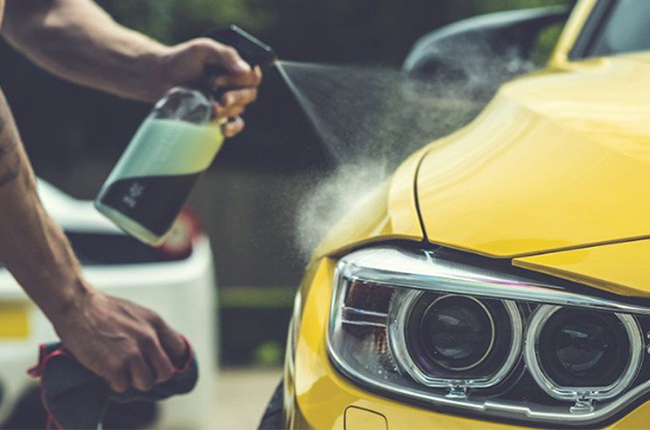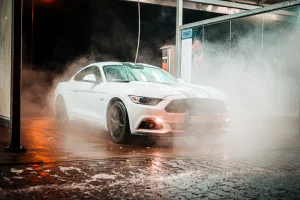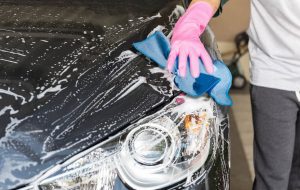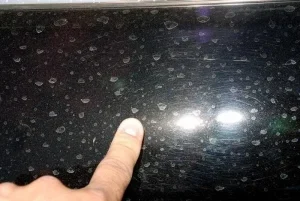No matter your water restrictions or conservation goals, there’s no excuse for your vehicle to become dirty. With various products on the market to restore its luster without using running water, there’s no excuse for its filthiness to remain.
Microfiber towels are recommended, as they’re soft and effective at trapping dirt particles. Paper or kitchen towels won’t do the trick and may tempt you to scrub too aggressively at your paintwork, potentially harming its integrity.
Microfiber Towels
Microfiber towels are indispensable detailing tools, and their efficacy relies on proper care. Wash them after every use to avoid contamination from contaminants like sand or grit that can scratch auto paint, and to extend its lifespan and increase efficiency of cleaning.
Once towels are cleaned and disinfected, it’s important to allow them to air dry or place in an enclosed plastic container with low heat settings before reuse. The latter method helps ensure softness and absorbency are maintained.
Many manufacturers rely on high-grade microfiber or polyester blend materials when creating towels, while some utilize an 80/20 mix which can be gentler on paintwork yet suitable for scrubbing other surfaces. The ratio between these two materials determines its quality and suitability for various applications; an 80/20 mixture may provide the ideal combination.
Assuring the quality of microfiber towels requires purchasing them from reliable and trusted sources; such as online shops or local car supply stores. Furthermore, it’s advisable to separate each microfiber towel according to what type of vehicle they will be tending for; doing this helps prevent inadvertent transference of dirt between cars. As an extra safeguard measure, make sure they come from within their country of origin, as this could affect their effectiveness and quality.
Wash Mitt
Water-based car washing systems such as hose, bucket, wash mitt, and microfiber towels may be ideal, but going waterless can be an efficient alternative if time is of the essence. Just keep these important considerations in mind to get optimal results from your waterless car wash experience.
First and foremost, make sure you invest in a top-quality washing solution. According to Cooley, an ideal product “should loosen and lubricate dirt particles for easier removal without scratching paint”, such as Blackfire Car Wash Spray, P21S Bodywork Conditioning Shampoo or Pinnacle Crystal Shine Waterless Wash – which offer ample lubrication while simultaneously protecting wax or sealant layers on paintwork surfaces.
Be sure to utilize a quality microfiber wash mitt. Microfiber towels are super-soft, excellent at collecting particles while protecting the paint finish from damage, while kitchen or paper towels make the process take longer and lead to harder scrubbing than necessary – potentially ruining its finish in the process.
Make sure to rinse your wash mitt on a regular basis to help avoid cross-contamination, which occurs when rubbing dirt off one part of your vehicle with your dirty towel and transferring it onto another section of it.
Soap
If you plan to wash your car without using an active hose, make sure the soap you choose is specially formulated for automobiles – that way it can help achieve a streak-free shine and achieve the ultimate clean vehicle! For added efficiency, foam cannons work in conjunction with standard pressure washers to produce thick blankets of suds which lift away contaminants and dirt from surfaces quickly and efficiently.
Rinseless wash products provide another solution, working similarly to traditional car soap but without needing water for rinsing. Add one oz per gallon dilution into a bucket, dip your wash mitt into it, and start cleaning! Additionally, purchase one with an integrated grit guard that traps dirt particles that could scratch up your paint’s finish and start right away.
For optimal results, utilize the two-bucket method, using one bucket filled with soapy water and the other for rinsing your wash mitt. Next, go over each section of your vehicle again to remove any remaining dirt or grime; when finished, rinse thoroughly using a microfiber towel in order to get rid of any soap residue left behind, thus helping it dry quicker without streaks or spots forming on its surfaces.
Water
If you want to conserve water, try switching over to waterless car wash products. These sprays contain special cleaners designed to loosen and lubricate dirt without harming the paint surface; some require diluting with water while others come ready-to-use.
To use this technique, spray a small area (half the roof or hood is an ideal target area) with your waterless cleaner and let it emulsify dirt and grease for about 10 seconds before wiping it all away in one direction with your cloth or sponge rag. A second pass may be necessary depending on its severity.
Utilize plenty of products and clean towels. According to Cooley, microfiber towels are ideal as they quickly capture dirt. Kitchen or paper towels take longer and may leave behind microscopic particles that scratch your car’s finish. Be sure to switch out your towel frequently so as not to rub the same dirt back over it again after cleaning off one panel.
This method is ideal for residents in drought-prone regions or anyone looking to reduce water usage, but not recommended for heavily soiled cars, as it won’t remove all grease and dirt effectively. If your concern lies within appearance issues of your vehicle, professional detailing services could provide more efficient results.



